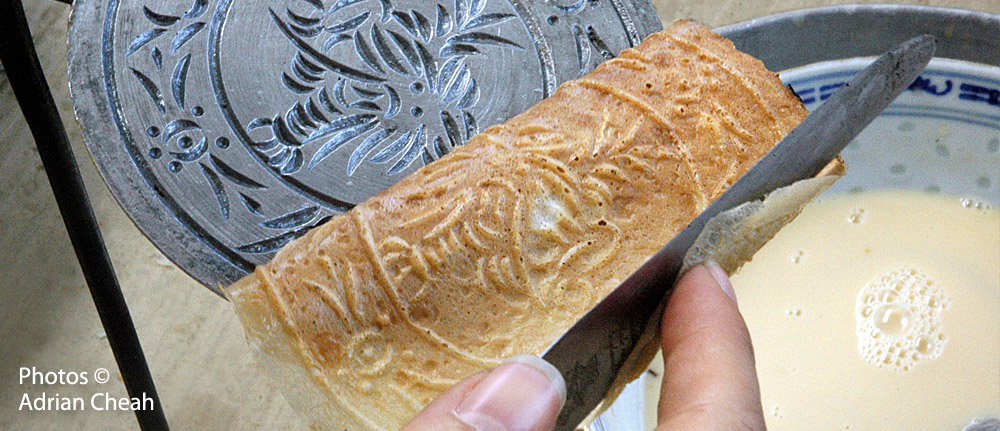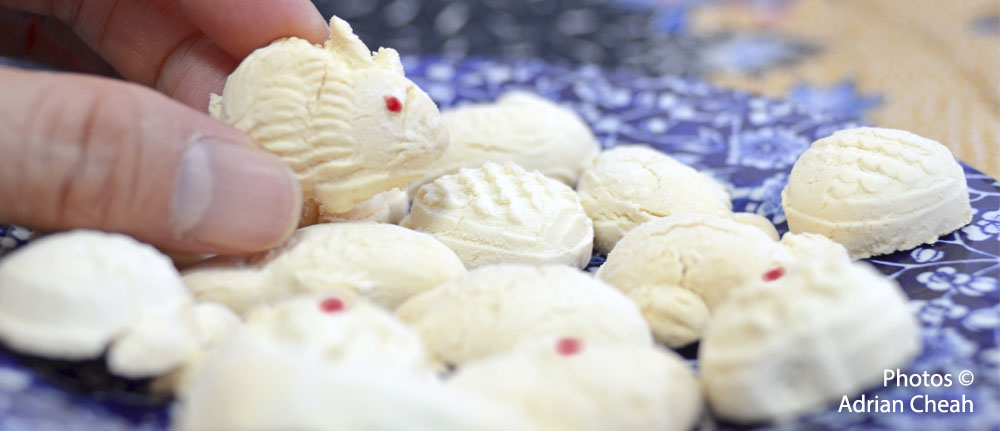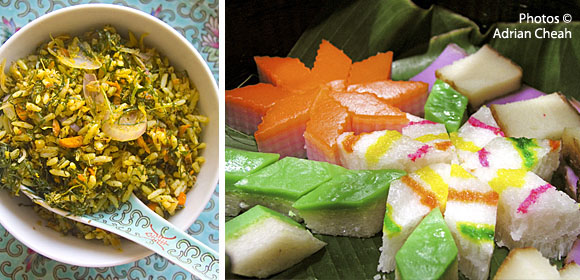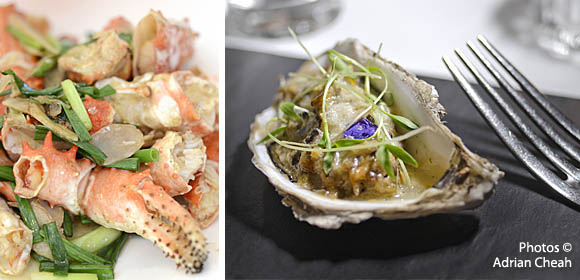Colourful onde onde ubi keledek recipe from Madam Lily Wong

Nyonya kuih are colourful Asian sweet cakes that are popularly served for breakfast and afternoon tea and as snacks any time of the day. The selections are many and varied, available at morning markets and food courts throughout Penang. One such type is the explosively delicious onde onde.
Continue Reading
Savoury Or Kuih (steamed yam cake) recipe from Lily Wong

"Yam", as it is often known in Penang, actually refers to taro. While "yam" encompasses various plant species in the Dioscorea genus with edible tubers, Or Kuih specifically uses taro. For local authenticity, I'll stick with "yam". Or Kuih, a steamed yam cake, is a lovely local delicacy topped with aromatic shallot oil, fried dried shrimps, crispy shallots, spring onions and diced chillies. Traditionally served with chilli sauce or "tnee cniau" (sweet sauce) on the side, this dish embodies comfort food. A perfect slice of yam cake should be aromatic and tender, with yam chunks that melt in the mouth.
Continue Reading
Mum’s Chio Hua – the golden Nyonya jelly our family treasures

Looking back on my childhood, the memories that stand out most vividly are often tied to our kitchen – a space where I first discovered my love for cooking. My mother shared so much with me in that lively corner of our home and those lessons remain close to my heart. Whether it was preparing fiery sambal babi or crafting the crunchy, glistening Nyonya jelly known as chio hua (cheok hwa), her guidance filled my childhood with joy and the ho-chiak-ness of good food.
Continue Reading
Otak-otak, a savory parcel of fish custard

Unwrap a parcel of otak-otak and you will catch a waft of the spicy, delicious egg-like fish custard that is usually served with other dishes common in a Nyonya household. Otak-okak can also be eaten on its own or as an appetiser or even with bread. This popular dish is available at Nyonya restaurants, some food courts and wet markets, as well as a common spread in “Economy Rice” stalls.
Continue Reading
The art of making the perfect Kuih Kapit (love letters)

Some believe that oysters hold aphrodisiac qualities, while others claim that the tomato, known as pomme d'amour – French for "love apple" – is the true food of love. In Penang, however, there is a delicacy that, despite its romantic name, is neither an aphrodisiac nor a token of affection. Yet those who have tasted it often wax lyrical over its aromatic, sweet and lemak goodness. The "love letter", more commonly known as Kuih Kapit, is a popular favourite, particularly during the Chinese New Year.
Continue Reading
Nyonya Kuih Bangkit with a difference. Why not?

Nyonya Kuih Bangkit is a classic Chinese New Year cookie, cherished alongside favourites like Kuih Kapit, peanut cookies and pineapple tarts. Loved by Penangites, this petite, animal-shaped treat captivates with its sweet pandan fragrance that greets you at the first bite. Its slightly crisp outer layer encases a powdery softness that melts in the mouth.
Continue Reading

















